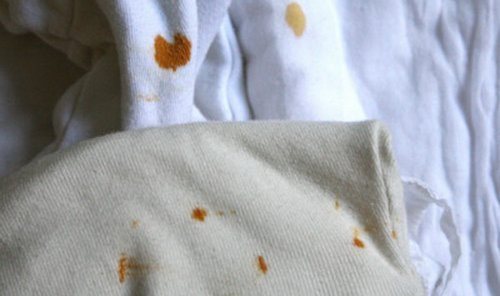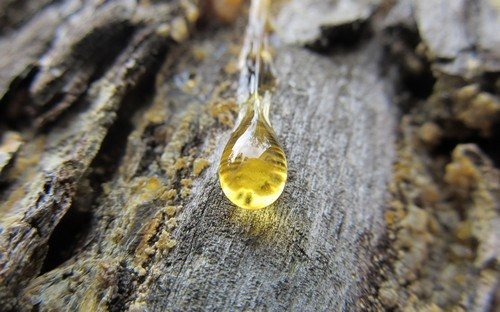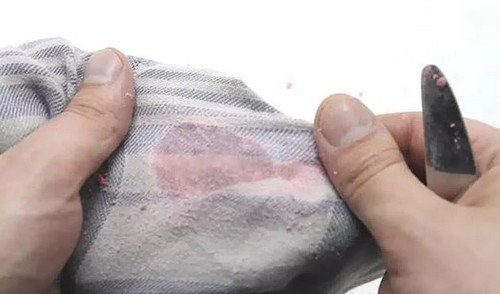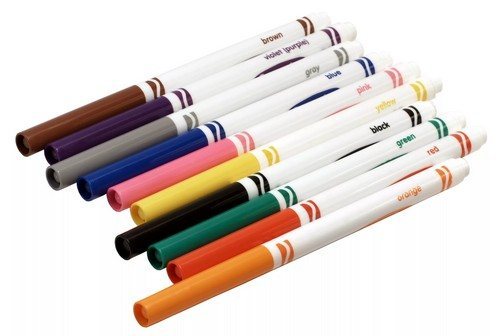Iodine is an excellent antiseptic, but when using it, it is very easy to stain clothes. There is an opinion that it is impossible to get rid of such contaminants, but there are ways by which you can wash off iodine even at home.

First actions
It is important to know that the ability to clean the area where the antiseptic has got in will increase if, immediately after the incident, you eliminate the solution that did not have time to be deeply absorbed. This should be done by lightly soaking it with a paper towel (napkin). If possible, it is necessary to separate the soiled items from other clean items (for example, remove the cover from the furniture). If the product has a lining, you need to prop it up and put paper towels (change them periodically). You can place a small board covered with clean white material.
Few people know, but iodine spots washed with soap are very difficult to remove due to the creation of a soap film by foam, which accelerates the deep penetration of coloring elements into the fibers.
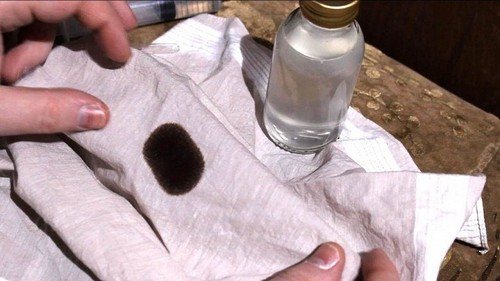
Recommendations for cleaning furniture upholstery
It happens that careless movement when opening a bottle of iodine results in contaminated furniture upholstery. The stain can be removed with ammonia. You need to add it (1 tablespoon) to 200 ml of boiled water, dip the stain with a dampened napkin. Periodically, you should replace the napkin with a clean one to prevent iodine from rubbing on the upholstery material. It is recommended to use a sodium fixative (hyposulfite) by pouring it onto the damaged area.After a certain time, the stain will come off on its own. You just need to rinse well and dry. However, if it remains, it is advised to additionally use a thick solution of laundry soap.
Features of removing strong, persistent iodine stains
If traces of iodine are noticed after a certain period, you can try to remove them by moistening them with water and sprinkling them generously with baking soda. Then carefully add table vinegar in a thin stream and leave for half a day. A chemical reaction accompanied by abundant foam formation will help dissolve traces of iodine. After 12 hours, rinse thoroughly with running preferably cool water, wash as usual, and leave to dry in the sun.
Removing iodine stains from different types of fabrics
You need to start cleaning based on their characteristics.
- Jeans, thick fabric. The method is suitable for blue, black non-fading jeans. First, moisten the contaminated area with plain water, then apply potato starch in as thick a layer as possible, do not touch it for 11-12 hours. The iodine trace will not disappear, but under the influence of a chemical reaction it will change color (become bluish). After waiting the specified time, brush off the starch with a soft brush. Then rinse and wash again at a gentle temperature. If the dirt is old, you will have to additionally apply a stain remover.
- Delicate items (silk, chiffon, cashmere, wool). Heavy stains can only be cleaned with special chemicals. For slightly soiled clothes, it is recommended to rub the soiled area with clean potatoes. To improve the result, apply it to both sides of the fabric and wait for the juice to be absorbed (a couple of minutes).Then wash the blue area using the usual method.
- Colored fabric. The best option is denatured alcohol. Treat the stain with it undiluted, wait 10 minutes, and rinse. To consolidate the result, treat with laundry soap.
- Synthetics, mixed fabrics. It must be remembered that when removing the antiseptic from them, it is very easy to disturb the texture of the fibers or wash away their tone. Because of this, it is very important to check that they are stable (preferably on the back seam) before you start cleaning. If there is no damage, you can try treating the stained area with medical alcohol or nail polish remover containing acetone. The alcohol must be very carefully applied to the iodine site, wait 5-7 minutes. When using nail polish remover, it is recommended to use a clean cotton sponge soaked in it. Treat the desired area from the edge to the middle with light movements without strong pressure, otherwise it may increase even more. When the iodine trace fades (disappears), wash the item at a temperature not exceeding 40 C. After treatment, thoroughly ventilate the item to remove its specific odor. Acetone is absolutely not suitable for silk products and cashmere. Items made from these materials may fade and lose shape.
- Cotton. For small stains, it is recommended to soak the item in milk for 30 minutes. Then rinse with running water and wash with soap (laundry soap). Some housewives recommend rubbing with laundry soap first. The last stage of this treatment is regular washing. Using lemon juice may help. Use fresh lemon juice or a weak solution of citric acid. Apply the finished product so that the item is well saturated.Wait a few minutes, the stain should lighten. Complete the procedure by washing in the traditional way.
- White clothes. The forecast for the consequences of removing iodine stains from white materials is disappointing, but it is still worth trying a good method based on hydrogen peroxide or ammonia. 1 full tablespoon of ammonia should be diluted with a glass of slightly warm water. Moisten a clean cotton swab with the resulting mixture and very carefully, moving from the edges to the middle, blot the cleaned area. Remove residues with cold water. To remove large marks, the process must be repeated. It is important to know that the antiseptic is afraid of direct sunlight. Therefore, if a stain remains after cleaning white clothes, it is advised to dry them in the open sun. For beige fabrics and shades of white, the selected solution must be diluted with water according to a 1:1 ratio. Be sure to test the resulting liquid from the reverse side. Add more solvent if necessary. You can try cleaning the contaminated area with potato starch. It is considered the safest product among stain removers.
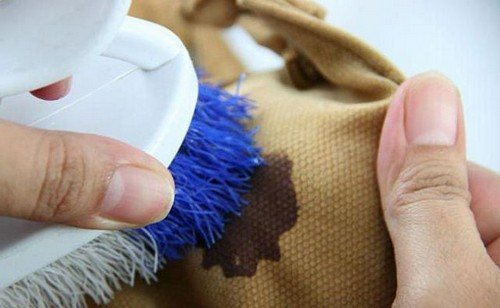
Specialized means
They can serve well when using simple methods does not help. They should be used strictly according to the instructions provided by the manufacturers. The most important thing is to adhere to the specified proportions, otherwise you can easily disrupt the structure of the material and irreparably damage the item. Active bleach is suitable for white items, and stain remover for black and colored items. When choosing a product, you need to consider the color and type of material. After using it, you should rinse your clothes thoroughly and wash them.When using solvents and chemicals, it is recommended to use gloves to avoid allergic reactions and the negative impact of the acidic environment.
Don't worry too much about iodine getting on your clothes. A correctly chosen method based on natural products or household chemicals can completely remove dirt from clothes even at home. The main thing to remember is that before choosing any method, it is advisable to test it on an inconspicuous part, and it is preferable to remove the stain from the inside so as not to damage it.


